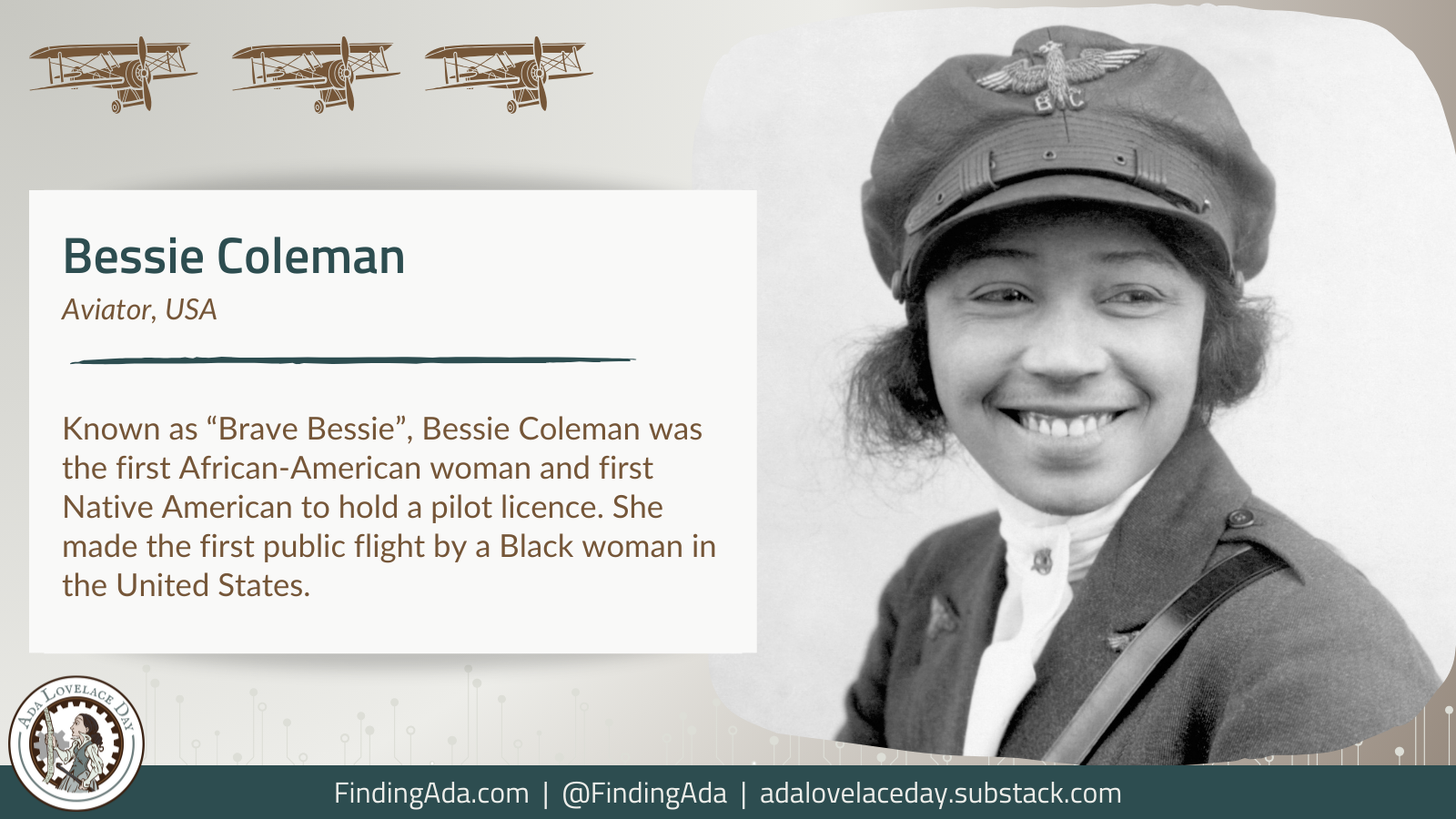Bessie Coleman
Bessie Coleman was an American aviator. The first Black person and person of Native American descent to earn an international pilot’s licence, she made the first public flight by a Black woman in the United States.
Coleman was born on 26 January 1892 into a family of sharecroppers in Texas. Noted as an outstanding maths student from an early age, she could only afford to attend college for one term before dropping out. While working in a barber shop in Chicago in her early 20s, she met pilots recently returned from World War I, whose stories of flying across Europe set her imagination alight.
At the time, however, flight schools in the US refused to accept women, Black people and Native Americans as students (Coleman’s father was of mixed African-American and Native descent). When Coleman’s brother teased her that she’d never fly a plane like the French female pilots he’d met during the war, she decided that a trip to France was her best route into the sky.
Coleman saved and obtained sponsorships to go to France for flight school, travelling to Paris in November 1920. She earned her pilot’s licence in just seven months, becoming the first Black woman and first self-identified Native American to do so in June 1921. That September, she returned to the States, but quickly realised that earning a living from aviation would be difficult; commercial flights were not yet widespread in the US. The best way to earn a living from civil aviation, she determined, was competitive stunt flying.
Keen to hone her skills in a highly dangerous field, and still unable to find a flying instructor willing to take on a Black woman in the US, Coleman returned to France to complete an advanced aviation course in February 1922. She spent time in the Netherlands with Anthony Fokker, one of the world’s most high-profile aircraft designers, and received training from one of his company’s chief pilots in Germany. On 3 September 1922, Coleman made the first public flight by a Black woman in the US, piloting a Curtiss JN-4D Jenny at Curtiss Field on Long Island, New York.
Coleman’s performances involving dramatic tricks in the air were hugely popular, and she became a media sensation known as “Queen Bess” and “Brave Bessie”. Her dream was to establish a school for African-American aviators, but she didn’t live long enough to see this ambition realised: she died in a plane crash in 1926, aged just 34. Her legacy, though, lived on. When NASA astronaut Dr Mae Jemison became the first African-American woman to travel into space in September 1992, she carried a photo of Coleman with her.
Further Reading
- Bessie Coleman, Wikipedia
- Bessie Coleman, National Air And Space Museum
- Bessie Coleman, Kerri Lee Alexander & Rebecca Ljungren, National Women’s History Museum, December 2022
- Overlooked No More: Bessie Coleman, Pioneering African-American Aviatrix, Daniel E Slotnik, The New York Times, 11 December 2019
- For Pilot Bessie Coleman, Every ‘No’ Got Her Closer to ‘Yes’, David Kindy, Smithsonian Magazine, 21 January 2022
- Bessie Coleman, Julia Lauria-Blum, Cradle of Aviation Museum, 7 June 2019
- Who was Bessie Coleman and why does she still matter?, Al Jazeera, 26 January 2017
Written by Moya Crockett, with thanks to Stylist for their support.
